Germany Geospatial Imagery Analytics Market Size
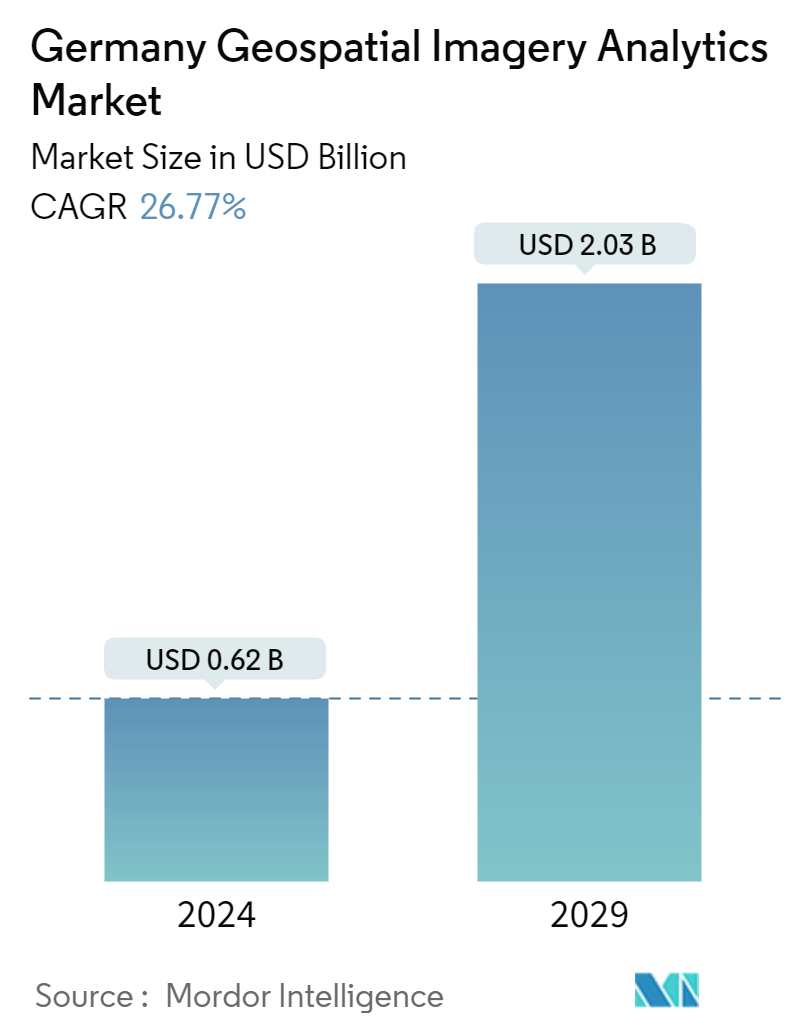
| Study Period | 2018 - 2028 |
| Base Year For Estimation | 2023 |
| Market Size (2024) | USD 0.62 Billion |
| Market Size (2029) | USD 2.03 Billion |
| CAGR (2024 - 2029) | 26.77 % |
| Market Concentration | Medium |
Major Players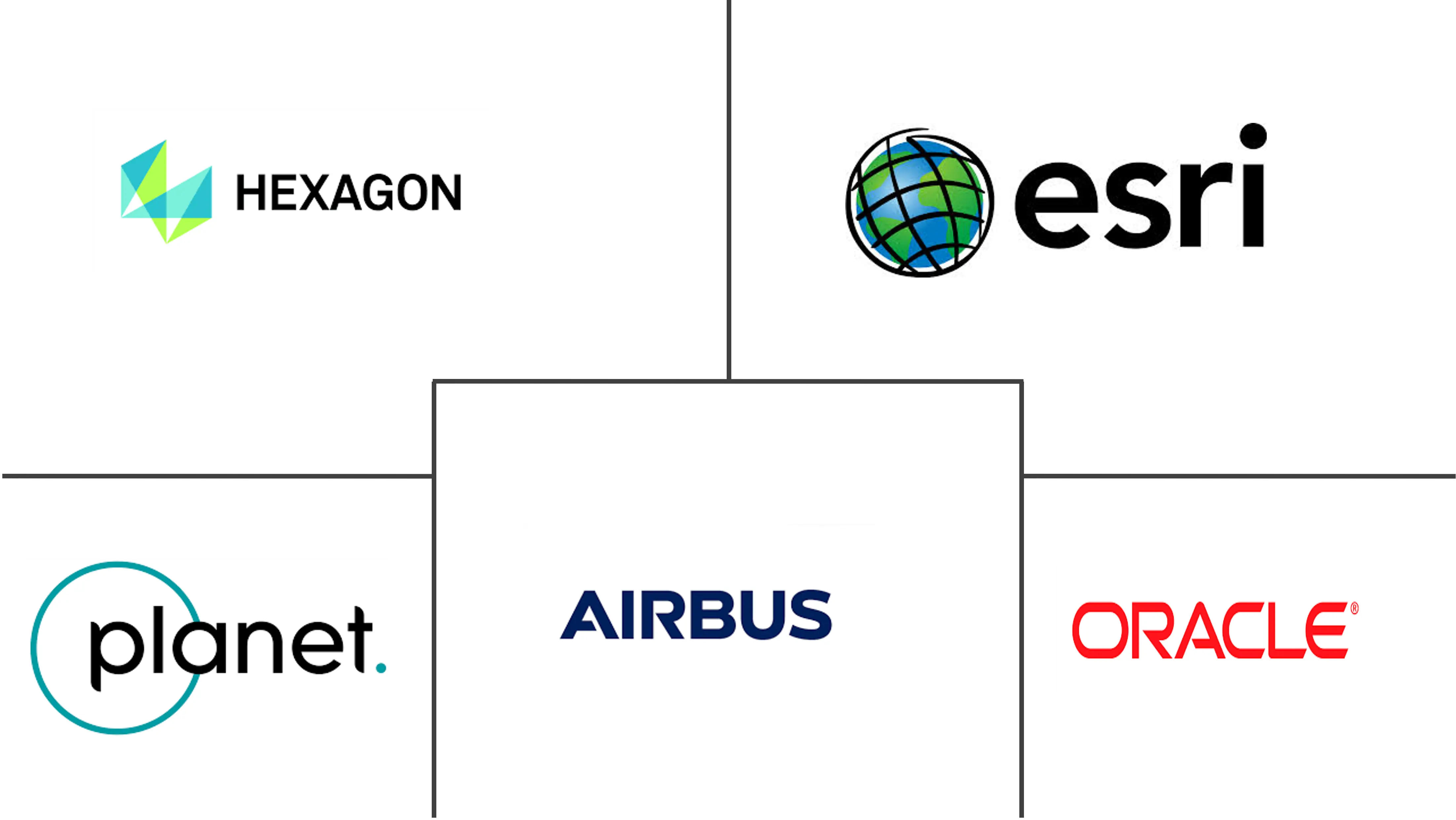
*Disclaimer: Major Players sorted in no particular order |
Germany Geospatial Imagery Analytics Market Analysis
The Germany Geospatial Imagery Analytics Market size is estimated at USD 0.62 billion in 2024, and is expected to reach USD 2.03 billion by 2029, growing at a CAGR of 26.77% during the forecast period (2024-2029).
- The growing urban population in Germany and the use of data analytics in various industries are driving market growth. Applying geospatial imagery analytics for climate assessment, urban planning, and disaster response also supports this growth. Additionally, linking numerical and geo-referenced statistics in spatial analysis can reveal relationships and phenomena that traditional analyses might miss. This shows the growth potential of geospatial imagery analytics in Germany.
- The German government is promoting smart cities and regions with approximately USD 882.11 million fund. The Model Projects Smart Cities supports 73 projects, creating best practices for 11,000 German municipalities. This shows the country's priority in developing urban planning and construction, which will fuel the demand for the market in the future due to the application of geospatial data analytics on resource planning and urban project development.
- Geospatial analytics uses maps to understand spatial contexts and show information through visual patterns and images. It also improves situational awareness and emergency response. By using real-time spatial data and predictive models, emergency responders can identify high-risk areas, coordinate operations, and allocate resources efficiently during natural disasters, humanitarian crises, or public health emergencies. This supports market growth in Germany, aligning with the country's focus on environment monitoring during the forecast period.
- However, one of the primary challenges in geospatial imagery analysis lies in guaranteeing the data's high quality and accurate representation. Integrating data from diverse sources poses another constraint, given the variations in formats, scales, and projections. Additionally, geospatial data frequently contains sensitive information, including personal data, necessitating stringent protection under privacy laws and regulations.
- The COVID-19 pandemic positively impacted the adoption of geospatial imagery analytics solutions in Germany. This market's sustainability is mainly driven by the extensively increasing adoption of geospatial data analytics-based services by businesses to understand customer behavior and increase sales. Additionally, these solutions allowed users to map the different locations and other services on a dashboard, which aids in superior monitoring and surveillance for disease clusters or hotspot identification and comparing alternative strategies to prevent the spread of the diseases during the COVID-19 pandemic.
Germany Geospatial Imagery Analytics Market Trends
Imagery Analytics Contributes Significantly to the Market Share
- Satellite imagery has become significant in monitoring, analyzing, and understanding Earth's surface changes. In geographic information systems (GIS), it is indispensable for collecting, assessing, and interpreting spatial data. Satellite photography, capturing Earth's features through satellites, has become a pivotal resource across multiple sectors in Germany, supporting its market growth.
- Satellite imaging application in urban planning helps map and track land use, infrastructure development, and urban growth changes. It enables city planners to make educated decisions about zoning, transit networks, and infrastructure development, which would fuel the market growth in Germany in line with the country's urban development growth during the forecast period.
- Additionally, satellite imagery creates accurate and current maps. It contributes significantly to evaluating catastrophe risk by measuring the vulnerability of the country's geography and enhancing emergency response preparation, supporting the market growth in Germany.
- Germany has initiated the Environmental Mapping and Analysis Program (EnMAP), a hyperspectral satellite mission designed to monitor and characterize the Earth's environment globally. EnMAP assesses geochemical, biochemical, and biophysical variables, offering insights into the current state and changes in terrestrial and aquatic ecosystems. This shows the growing need for geospatial imagery analytics in environmental monitoring applications nationwide.
- The UFZ Forest Condition Monitor was established in the country to provide spatially explicit information about the condition of Germany's forests and identify forest changes or anomalies. Subsequently, these anomalies are validated using forest condition surveys and damage mappings at selected observation sites, showing the demand for the spatial imagery analytics market in the country.
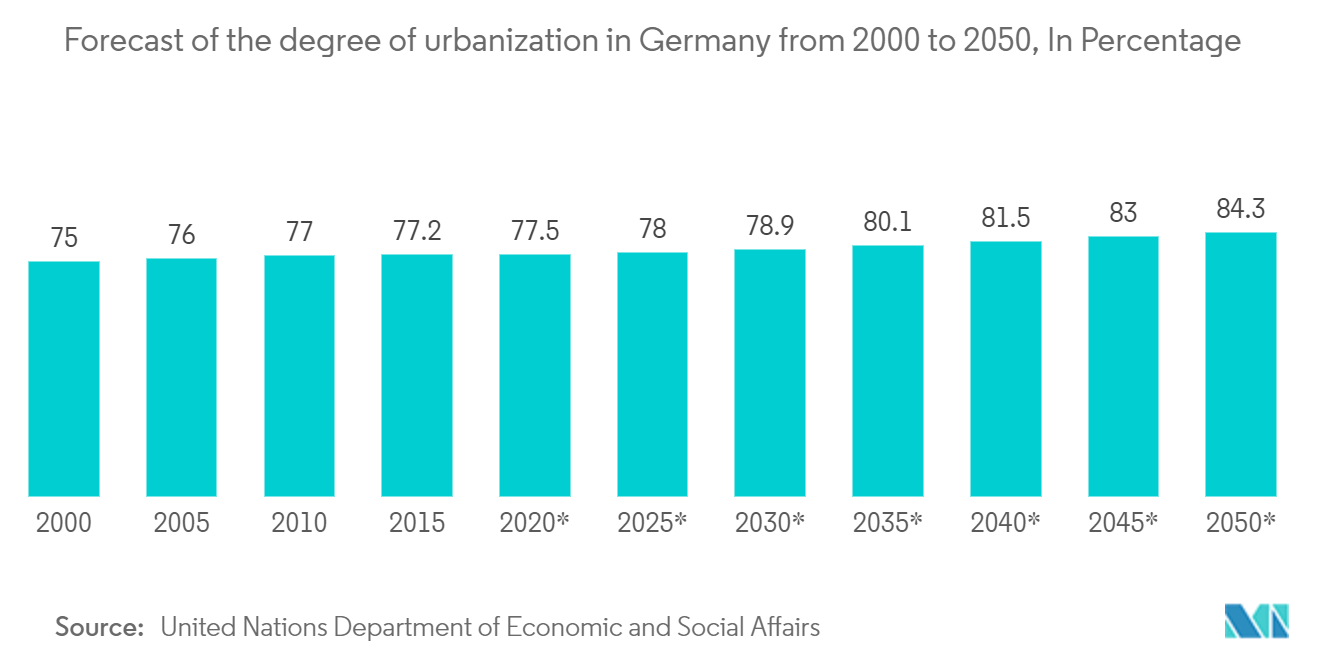
The Agriculture Segment Support the Market Growth
- Precision farming has revolutionized agriculture by integrating satellite imagery, and by using multispectral and hyperspectral images, farmers may identify infections, monitor crop health, and optimize irrigation techniques. By analyzing the data, organizations can give farmers insightful information to help them decide how best to manage their crops, supporting the market growth in Germany.
- Satellite photography makes monitoring agricultural growth stages, determining ideal planting zones, and mapping soil composition easier. Precision agriculture uses this information to apply herbicides, fertilizers, and water more effectively, increasing crop yields while lowering environmental impact, which would support the market's growth in Germany and the smart-farming processes in the country.
- The German agricultural sector leverages geospatial imagery analytics for advanced crop management, including the adoption of Airbus's satellite imagery and analytics. Airbus equips farmers with high-resolution satellite data and potent vegetation indices. These tools aid in tracking biomass, nutrient levels, and field conditions, eliminating the necessity for on-ground assessments and showing the demand for geospatial imagery analytics in the country's agriculture sector.
- The country recently completed a project involving Germany-wide spatiotemporal modeling of carbon contents in agricultural soils through an analysis of satellite image time series and geodata, highlighting the market demand in the nation's agricultural sector for the forecast period.
- Moreover, the European company EOS Data Analytics collaborated with various agricultural enterprises in Germany and beyond to provide detailed crop monitoring services. Its platform offers high-resolution satellite images and advanced analytics to help farmers detect crop issues early and optimize resource use.
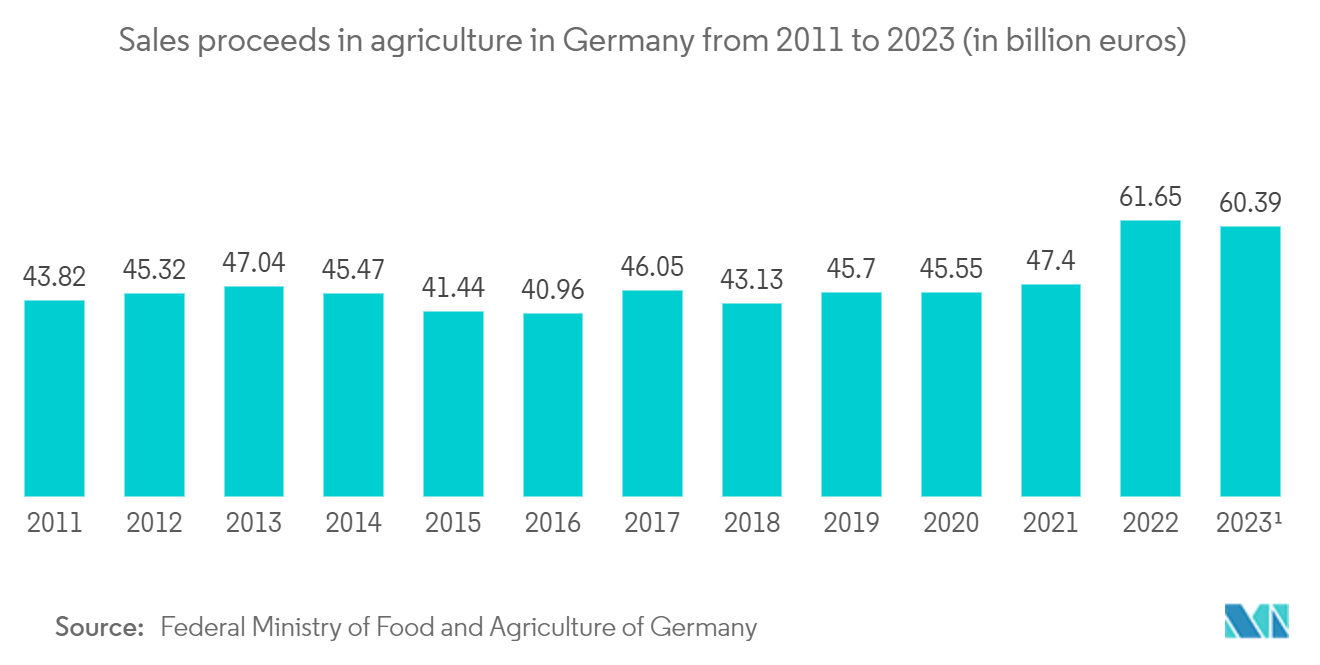
Germany Geospatial Imagery Analytics Industry Overview
The German geospatial imagery analytics market comprises many local and multi-national solution providers, making it moderately fragmented. Market vendors, including Hexagon AB, Esri Deutschland GmbH, Airbus se, Planet Labs PBC, and Oracle Corporation, have been registering active investments in portfolio expansions, supported by the renewal of contracts with end users through partnerships and collaborations, helping companies increase their market presence in the country.
- In May 2024, German smart agriculture firm BASF Digital Farming GmbH expanded its contract with Planet Labs to access more data from Planet’s Crop Biomass Planetary Variable analysis. BASF Digital Farming announced it would use more of Planet’s satellite data to enhance its “Xarvio” digital farming products and services.
- In February 2024, the City of Stuttgart in Germany, as part of its Smart City Stuttgart Concept, made strategic goals to support its offices of urban planning, housing, and buildings. Esri’s ArcGIS Reality Studio is expected to perform image alignment and the processing of DSM, True Ortho, Point Cloud, and 3D Mesh of the complete dataset, showing the market demand for imagery and video analytics.
Germany Geospatial Imagery Analytics Market Leaders
-
Hexagon AB
-
Esri Deutschland GmbH
-
Airbus se
-
Planet Labs PBC
-
Oracle Corporation
*Disclaimer: Major Players sorted in no particular order
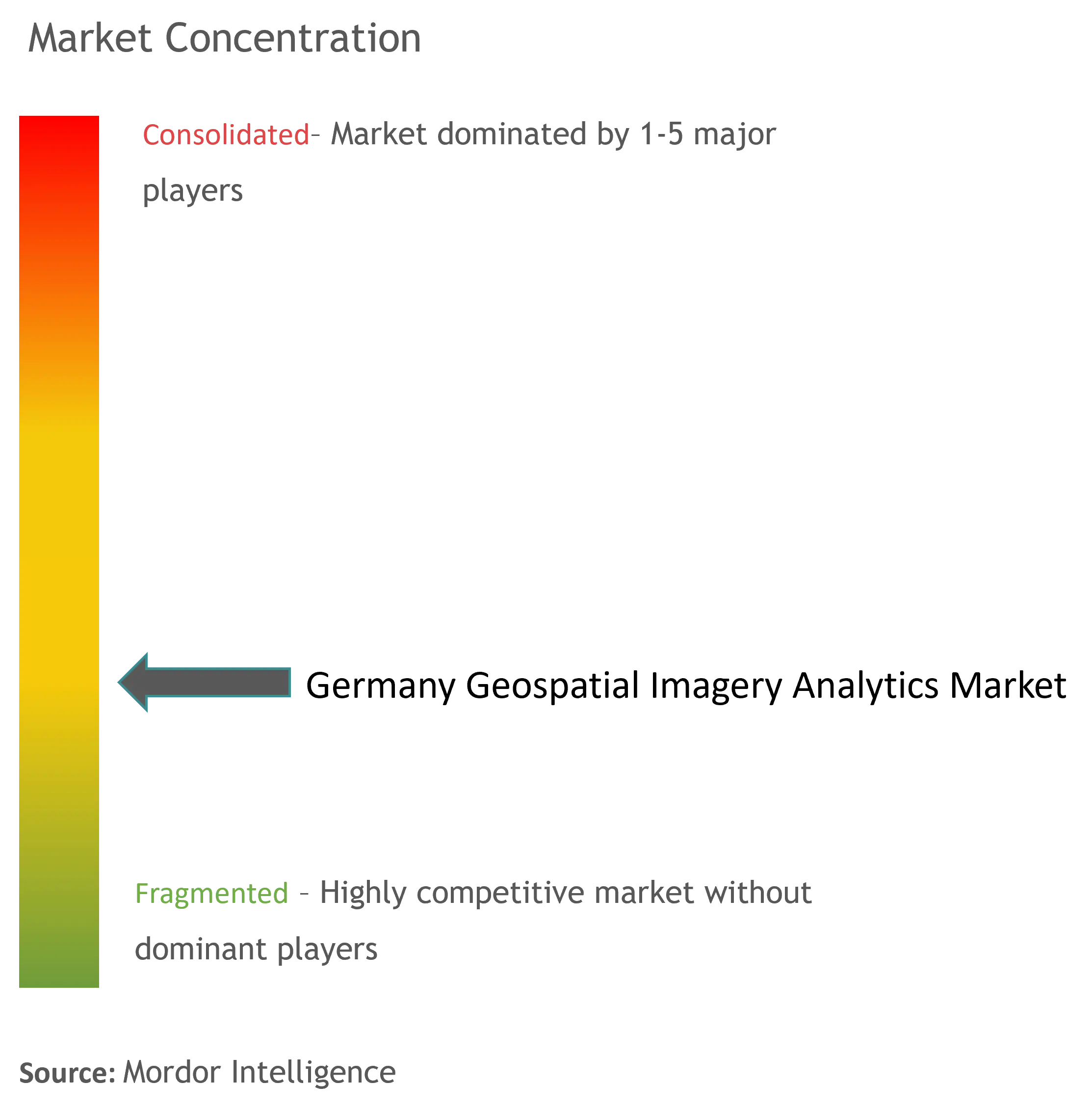
Germany Geospatial Imagery Analytics Market News
- January 2024 - LiveEO, a Berlin-based Earth observation scaleup company that specializes in using AI to analyze Earth observation data in support of critical transport and energy infrastructure, launched its EUDR Expert. It is an AI compliance advisor solution that helps understand the complexities and challenges that clients face with the EU Deforestation Regulation (EUDR).
- September 2023 - European Space Imaging (EUSI), a provider of very high resolution (VHR) optical satellite imagery, partnered with Umbra, a company in advanced space radar technology. This partnership aids customers in buying Umbra’s synthetic aperture radar (SAR) data directly through EUSI across Europe, including Germany, increasing the availability of geospatial imagery data and creating a market growth opportunity for analytics software.
Germany Geospatial Imagery Analytics Market Report - Table of Contents
1. INTRODUCTION
1.1 Study Assumptions and Market Definition
1.2 Scope of the Study
2. RESEARCH METHODOLOGY
3. EXECUTIVE SUMMARY
4. MARKET INSIGHTS
4.1 Market Overview
4.2 Industry Attractiveness - Porter's Five Forces Analysis
4.2.1 Bargaining Power of Buyers
4.2.2 Bargaining Power of Suppliers
4.2.3 Threat of New Entrants
4.2.4 Threat of Substitutes
4.2.5 Intensity of Competitive Rivalry
4.3 Industry Value Chain Analysis
4.4 Assessment of the Impact of COVID-19 on the Market
5. MARKET DYNAMICS
5.1 Market Drivers
5.1.1 The Growth of Infrastructure Development and Urban Planning in the Country
5.1.2 The Growing Demand for High-resolution Satellite Data for Crisis Response, Environmental Monitoring, and Nature Conservation Efforts
5.2 Market Restraints
5.2.1 High Costs and Operational Concerns
5.2.2 Vulnerability Related to Geoprivacy and Confidential Data Breaching
6. MARKET SEGMENTATION
6.1 By Type
6.1.1 Imagery Analytics
6.1.2 Video Analytics
6.2 By Deployment Mode
6.2.1 On-premise
6.2.2 Cloud
6.3 By Organization Size
6.3.1 SMEs
6.3.2 Large Enterprises
6.4 By Verticals
6.4.1 Insurance
6.4.2 Agriculture
6.4.3 Defense and Security
6.4.4 Environmental Monitoring
6.4.5 Engineering and Construction
6.4.6 Government
6.4.7 Other Verticals
7. COMPETITIVE LANDSCAPE
7.1 Company Profiles
7.1.1 Hexagon AB
7.1.2 Esri Deutschland GmbH
7.1.3 Airbus SE
7.1.4 TomTom International BV
7.1.5 Planet Labs PBC
7.1.6 Oracle Corporation
7.1.7 BAE Systems
7.1.8 Maxar Technologies
7.1.9 Microsoft Corporation
7.1.10 Google LLC
- *List Not Exhaustive
8. INVESTMENT ANALYSIS
9. MARKET OPPORTUNITIES AND FUTURE TRENDS
Germany Geospatial Imagery Analytics Industry Segmentation
Geospatial imagery analytics is a comprehensive solution system that provides imagery analytics from data collected through satellite images, including video and image data, of the earth for various applications across the end-user segments, including business intelligence, urban planning, and climate control solutions.
The study tracks the key market parameters, underlying growth influencers, and major vendors operating in the market, which supports the market estimations and growth rates over the forecast period. The study also tracks the revenue accrued through the sale of grown geospatial imagery analytics services used in various end-user industries across geography. In addition, the study provides the geospatial imagery analytics market trends, along with crucial vendor profiles. The study further analyses the overall impact of COVID-19 on the ecosystem. The market is segmented by type (imagery analytics and video analytics), deployment mode (on-premise and cloud), organization size (SMEs and large enterprises), and verticals (insurance, agriculture, defense and security, environmental monitoring, engineering and construction, and government).
The market sizes and forecasts are provided in terms of value (USD) for all the above segments.
| By Type | |
| Imagery Analytics | |
| Video Analytics |
| By Deployment Mode | |
| On-premise | |
| Cloud |
| By Organization Size | |
| SMEs | |
| Large Enterprises |
| By Verticals | |
| Insurance | |
| Agriculture | |
| Defense and Security | |
| Environmental Monitoring | |
| Engineering and Construction | |
| Government | |
| Other Verticals |
Germany Geospatial Imagery Analytics Market Research FAQs
How big is the Germany Geospatial Imagery Analytics Market?
The Germany Geospatial Imagery Analytics Market size is expected to reach USD 0.62 billion in 2024 and grow at a CAGR of 26.77% to reach USD 2.03 billion by 2029.
What is the current Germany Geospatial Imagery Analytics Market size?
In 2024, the Germany Geospatial Imagery Analytics Market size is expected to reach USD 0.62 billion.
Who are the key players in Germany Geospatial Imagery Analytics Market?
Hexagon AB, Esri Deutschland GmbH, Airbus se, Planet Labs PBC and Oracle Corporation are the major companies operating in the Germany Geospatial Imagery Analytics Market.
What years does this Germany Geospatial Imagery Analytics Market cover, and what was the market size in 2023?
In 2023, the Germany Geospatial Imagery Analytics Market size was estimated at USD 0.45 billion. The report covers the Germany Geospatial Imagery Analytics Market historical market size for years: 2018, 2019, 2020, 2021, 2022 and 2023. The report also forecasts the Germany Geospatial Imagery Analytics Market size for years: 2024, 2025, 2026, 2027 and 2028.
Germany Geospatial Imagery Analytics Industry Report
Statistics for the 2024 Germany Geospatial Imagery Analytics market share, size and revenue growth rate, created by Mordor Intelligence™ Industry Reports. Germany Geospatial Imagery Analytics analysis includes a market forecast outlook for 2024 to 2029 and historical overview. Get a sample of this industry analysis as a free report PDF download.



